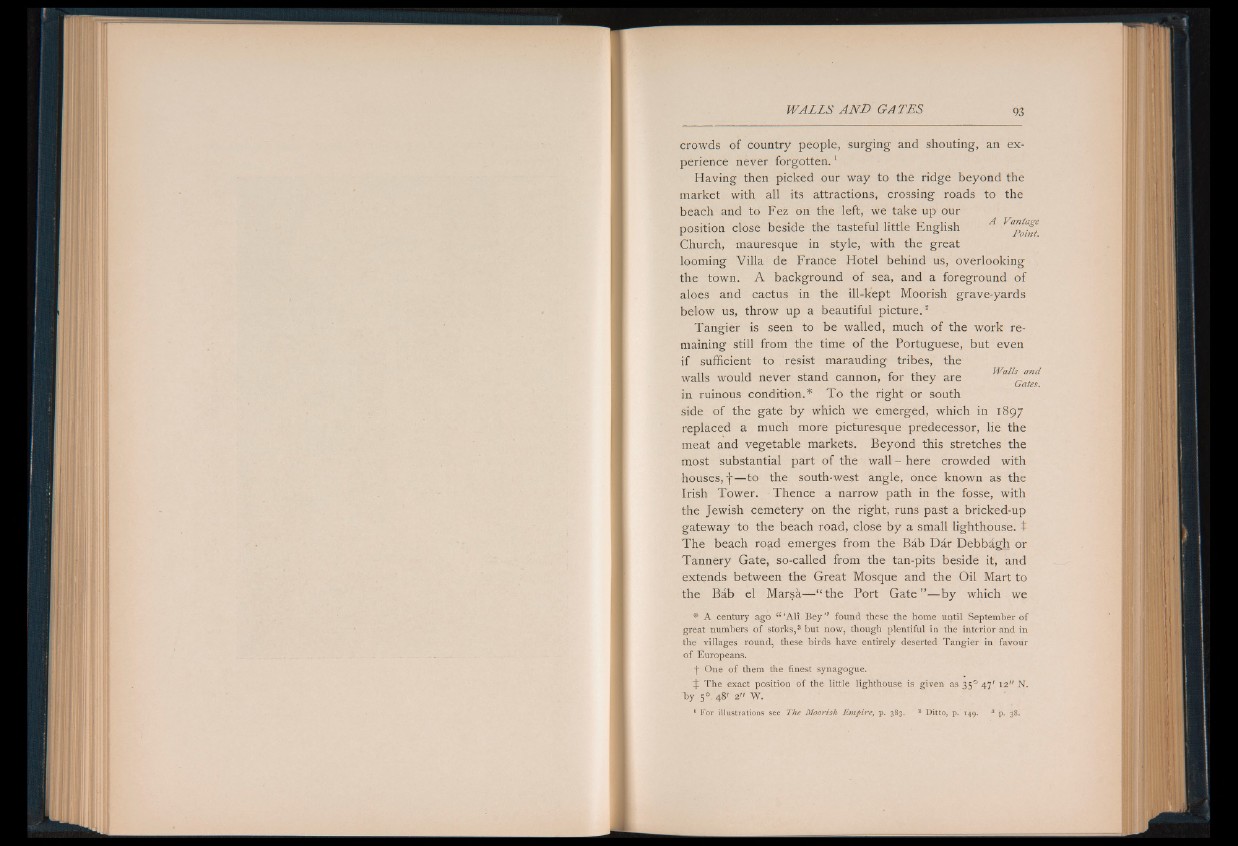
WALLS A N D G ATES 93
crowds of country people, surging and shouting, an experience
never forgotten. 1
Having then picked our way to the ridge beyond the
market with all its attractions, crossing roads to the
beach and to Fez on the left, we take up our
position close beside the tasteful little English A
Church, mauresque in style, with the great
looming Villa de France Hotel behind us, overlooking
the town. A background of sea, and a foreground of
aloes and cactus in the ill-kept Moorish grave-yards
below us, throw up a beautiful picture.2
Tangier is seen to be walled, much of the work remaining
still from the time of the Portuguese, but even
if sufficient to resist marauding tribes, the
walls would never stand cannon, for they are Wall.^t^and
in ruinous condition.* To the right or south
side of the gate by which we emerged, which in 1897
replaced a much more picturesque predecessor, lie the
meat and vegetable markets. Beyond this stretches the
most substantial part of the wall - here crowded with
houses, f — to the south-west angle, once known as the
Irish Tower. Thence a narrow path in the fosse, with
the Jewish cemetery on the right, runs past a bricked-up
gateway to the beach road, close by a small lighthouse, t
The beach road emerges from the Bab Dar Debbagh or
Tannery Gate, so-called from the tan-pits beside it, and
extends between the Great Mosque and the Oil Mart to
the Bab el Marsa— “ the Port Gate — by which we
* A century ago “ ‘All Bey ” found these the home until September of
great numbers of storks,3 but now, though plentiful in the interior and in
the villages round, these birds have entirely deserted Tangier in favour
of Europeans.
f One of them the finest synagogue.
. f: The exact position of the little lighthouse is given as 350 47' 12” N.
by 50. 48' 2" W.
1 For illustrations see The Moorish Empire^ p. 383. 2 Ditto, p. 149. 3 p. 38.